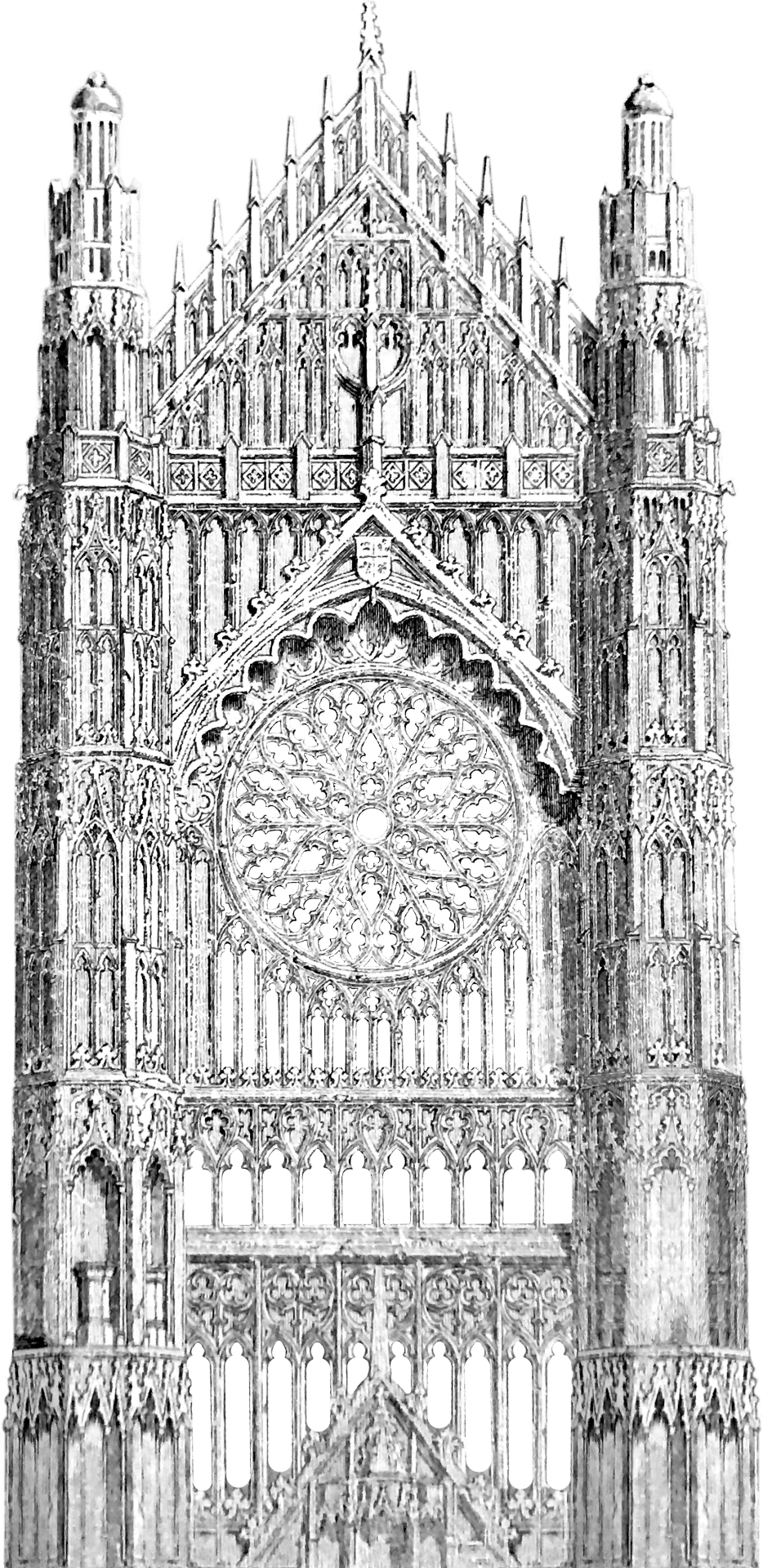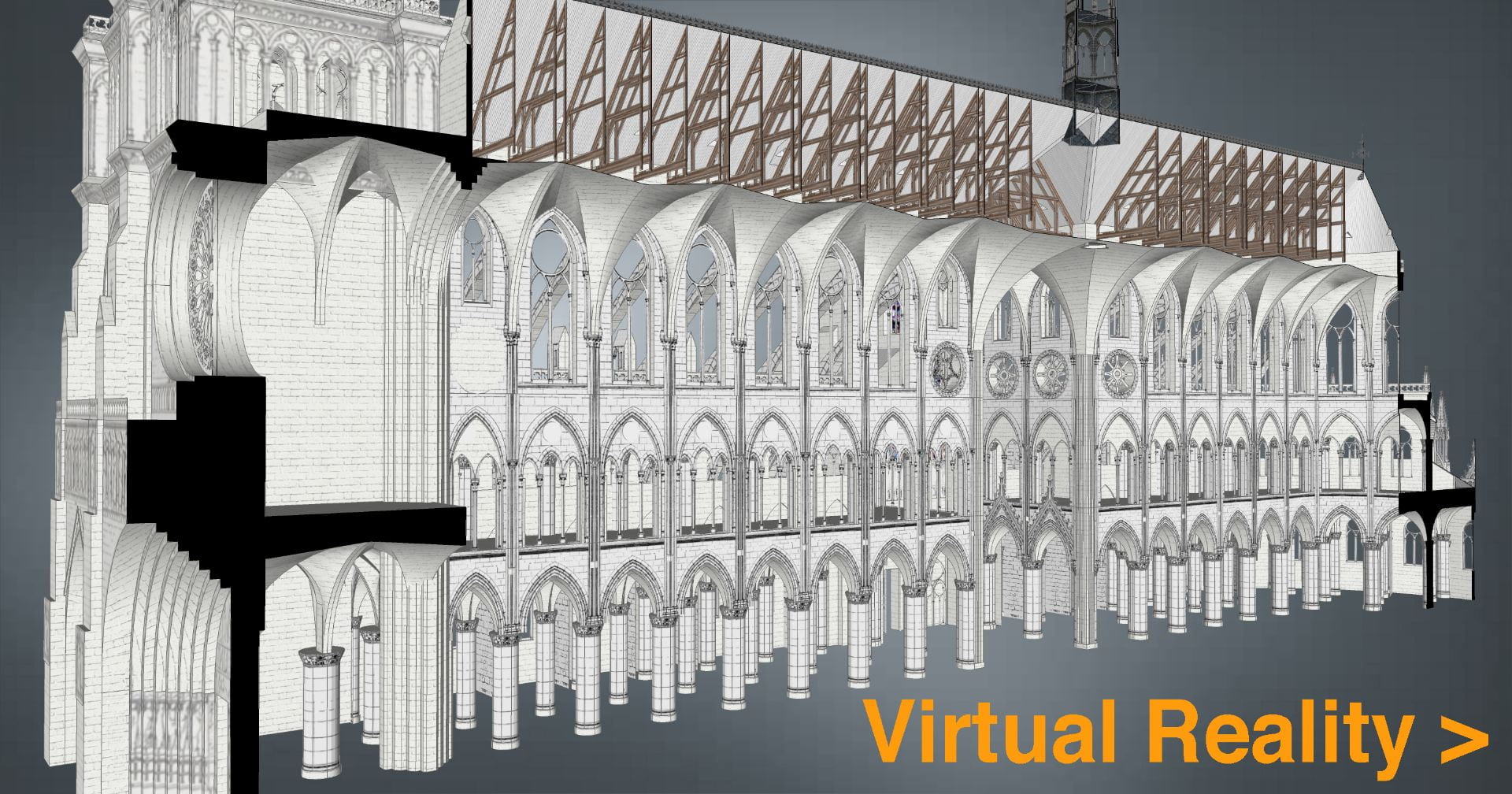Of all the stories of the greatest Gothic cathedrals, the tale of Beauvais is the most exciting. Construction of the Gothic cathedral began in 1225 at a time of bitter turmoil when France was establishing itself as a nation within its familiar modern geographical bounds. Beauvais, the tallest cathedral in France, was never completed, having endured two major collapses and a series of structural crises that continues to this day. Our Sketchup animation follows this dramatic narrative, allowing the viewer to experience and understand the famous collapse that brought down the upper choir in 1284 as well as the underlying design features that led to that disaster. Particularly intriguing is the visualization of the short-lived crossing tower constructed in the mid-sixteenth century and the rivalry between S-Pierre of Beauvais and Saint Peter’s in Rome.
It is hoped that besides appealing to a general audience of cathedral fans, this movie will be useful in the context of the classroom at high-school and university levels.
Directed by Stephen Murray
Produced by Myles Zhang
Special thanks to Étienne Hamon
Explore more
Further reading: Stephen Murray. Beauvais Cathedral: Architecture of Transcendence. Princeton University Press, 1989.
Visit Mapping Gothic for further photos and a panoramic tour of the cathedral interior.
Visit this link to download image stills of the cathedral at various stages of completion, for reuse in print publications.
Source files
Creating this animation required creating a computer model of the entire cathedral at all stages of construction. This model is shared below; click and drag your cursor to move around this virtual space.
Email [email protected] and [email protected] for access to source files.
High-resolution image stills from construction sequence
1220s fire to 1284 collapse

1225

1232

1240s

1240s

1250s

1250s Section
Before vs. after 1284 collapse

Before 1284 Collapse

After 1284 Collapse
After 1284 collapse vs. after 1300s rebuilding

After 1284 Collapse

After 1300s Rebuilding
1284 collapse to 1550s transept

After 1284 Collapse

1500s

1510s

1520s

1530s

1540s
Proposals for completing cathedral

1600s Proposed

1600s Proposed with Notre-Dame Type Facade

1600s Proposed with Late Gothic Facade

1600s Proposed with Late Gothic Facade
Proposed cathedral vs. actual extent of construction by 1573 collapse

1573 Proposed

1573 Actual Extent of Construction
Contemporary

Contemporary View

Contemporary View

Contemporary Section

Image sources
Hand-drawn image textures used in this model are based on actual scanned drawings of the cathedral: floorplan, choir section, choir elevation, and hemicyle section.
Audio sources
High medieval music: Viderunt Omnes by Pérotin, 1198
Late medieval music: Ave Maria by Josquin des Prez, c.1475
Contemporary cathedral: Pierre de Soleil by Philip Glass, 1986
Sound of material buckling
Sound of structural collapse













































